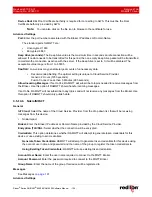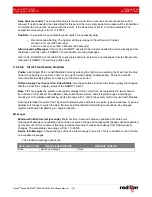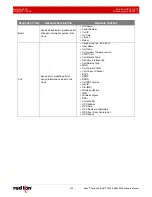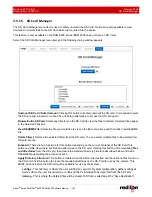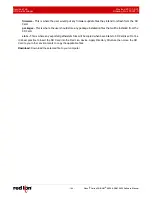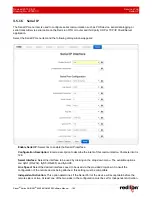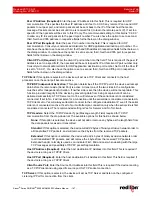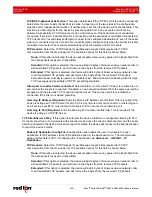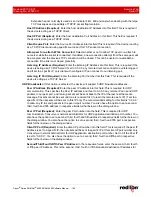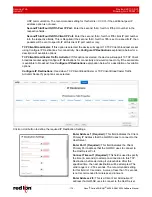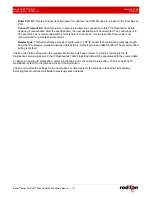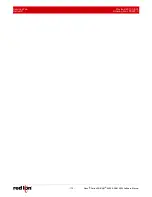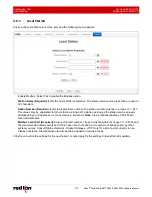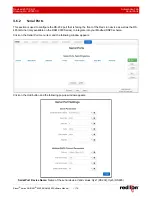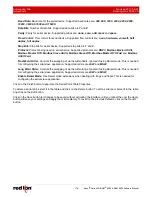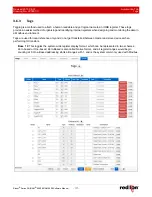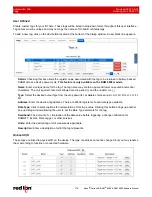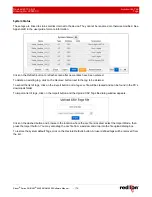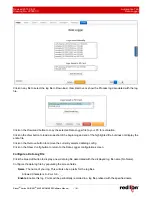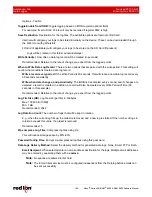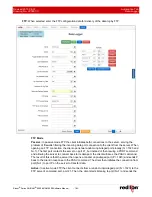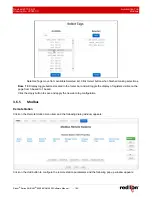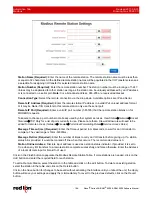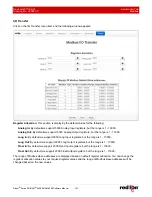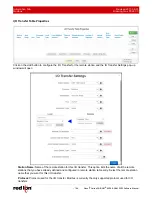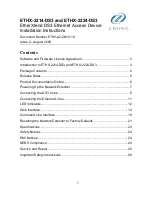
Revised 2017-08-31
Automation Tab
Drawing No. LP0997-C
Sixnet
®
Series SN/RAM
®
6000 & RAM 9000 Software Manual
- 173 -
3.6
Automation
Tab
The Automation menu contains all aspects of managing your Modbus and DNP3 based I/O transfers or messages.
This option is only supported in the RAM 6000 and the RAM 9000 series. The RAM 6000 or RAM 9000 acts as a
MODBUS Master and as an I/O concentrator for MODBUS/DNP3 devices. I/O for these devices can be read or
written using MODBUS/DNP3 I/O transfers with the RAM 6000 or RAM 9000 acting as a MODBUS/DNP3 master.
I/O data is stored in a local I/O database.
The RAM 6000 and RAM 9000 series will support:
•
I/O transfers using MODBUS/DNP3
•
Slave Station Status
•
Forwarding of MODBUS/DNP3 messages
•
Developing of third party applications using our SDK based on ELDK4.2 and the SIXNET IODB API.
Additionally, the RAM 6000 and RAM 9000 series will act as a MODBUS slave. This allows MODBUS masters to
request or update I/O points in the I/O database.
Modbus
Configuration
User interfaces will be provided to configure I/O transfers, the MODBUS forwarding table and serial interfaces.
MODBUS configuration data will be stored in an XML based file named modbus.xml. This file will contain the
following sections:
•
serials:
xml section to define the parameters used for serial ports for both MODBUS and DNP3.
•
localStation:
xml section to define the local station number and name for both MODBUS and DNP3.
•
remoteStations:
defines remote stations and the I/O transfers associated with them.
•
regAllocation:
defines the number of registers for each I/O type.
•
forwards:
defines the list of remote stations to forward MODBUS requests.
There are two (2) methods to configure these sections.
•
CLI:
The command line interface for the cellular RTUs and routers provides a Cisco-style telnet command
line interface. It writes an XML configuration file, which is used to drive the backend daemons.
•
Web UI:
This method is a WEB based interface which is the focus of this documentation.
The user interfaces will have the ability to:
•
Configure/Display local station information such as station name and station number.
•
Configure/Display serial ports
•
Configure/Display remote stations
•
Configure/Display I/O transfers
•
Configure/Display MODBUS forward stations
•
Configure/Display MODBUS registers allocation

